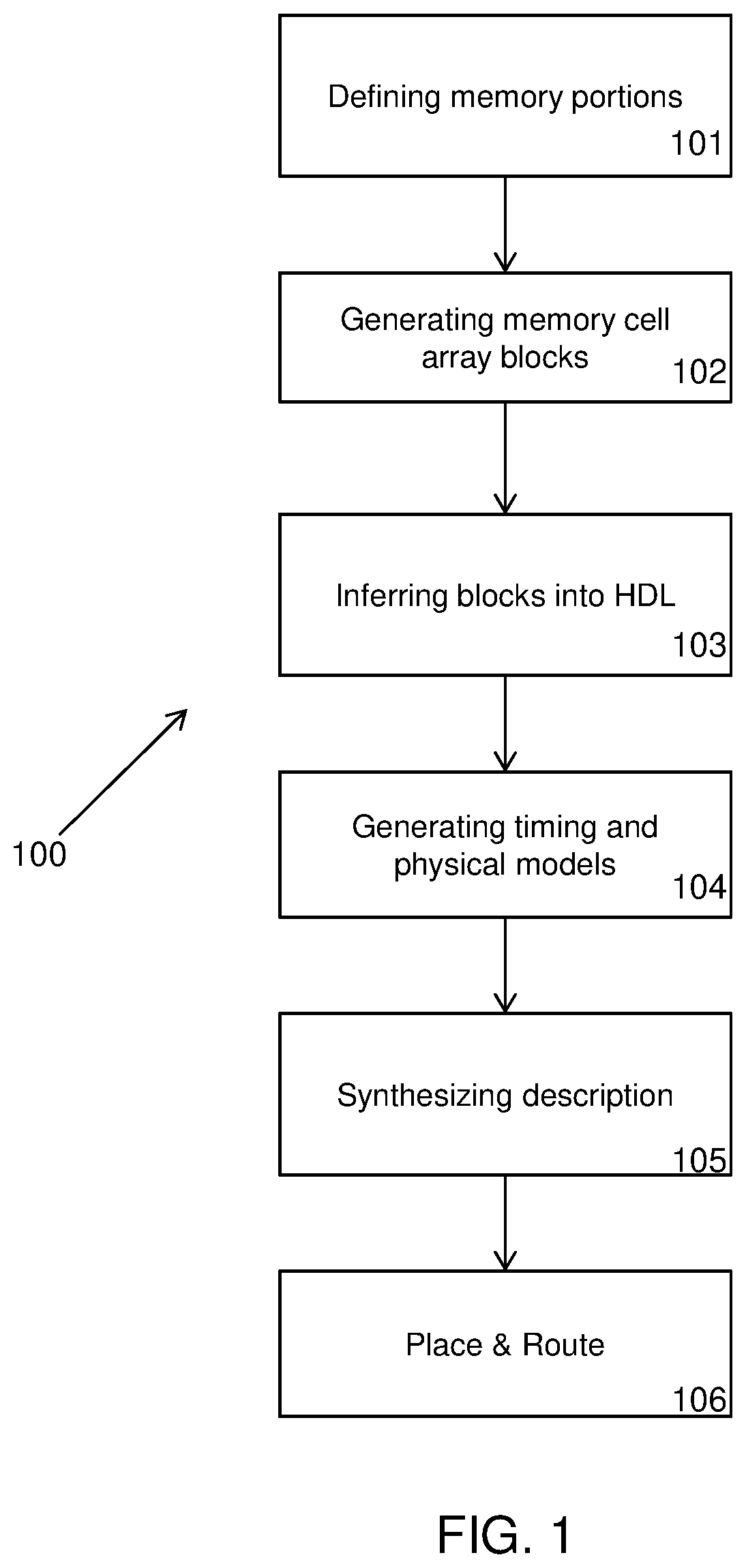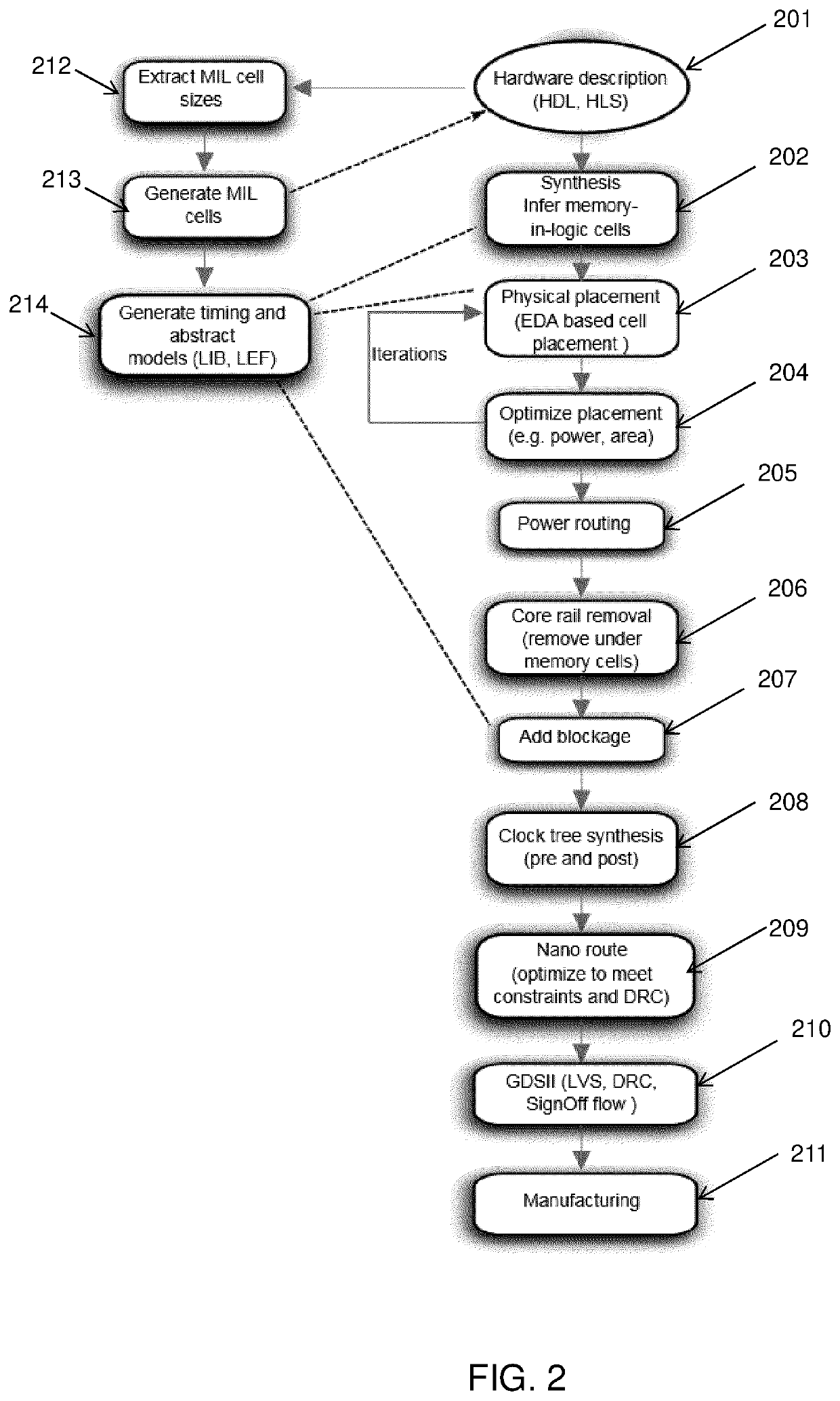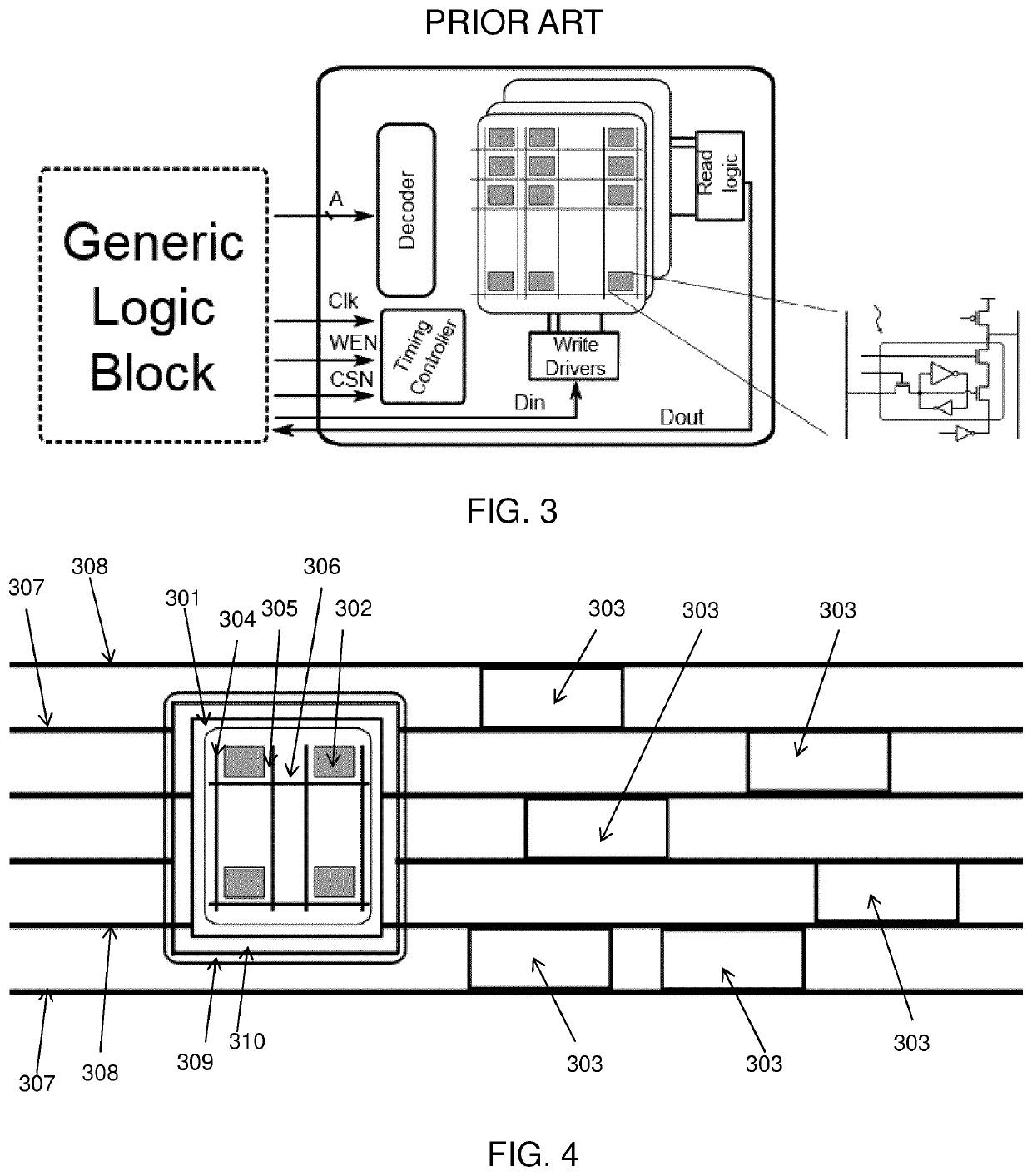Method for implementing an integrated circuit comprising a random-access memory-in-logic
- Summary
- Abstract
- Description
- Claims
- Application Information
AI Technical Summary
Benefits of technology
Problems solved by technology
Method used
Image
Examples
Embodiment Construction
[0030]The present disclosure relates to computer-implemented method for implementing an integrated circuit comprising at least one random-access memory. The inventors have realized that by designing new memory-in-logic cells, i.e. memory cell array blocks comprising tightly packed bit cells, wherein the memory cell array blocks sizes correspond to the sizes of a number of memory portions, a more efficient integrated circuit in terms of performance and area can be achieved. By maintain the advantages of conventional memories (mainly area) and by making these blocks smaller and adapted to be integrated and placed among standard cell logic, a design can be obtained which is both area efficient and avoids, or at least improves, challenges and issues related to routing congestion. As a result, higher bandwidths and energy efficiency (pJ / access) for memory accesses can be obtained. Preferably, the method is an automated circuit design method.
[0031]In a first embodiment, the method compris...
PUM
 Login to View More
Login to View More Abstract
Description
Claims
Application Information
 Login to View More
Login to View More - R&D
- Intellectual Property
- Life Sciences
- Materials
- Tech Scout
- Unparalleled Data Quality
- Higher Quality Content
- 60% Fewer Hallucinations
Browse by: Latest US Patents, China's latest patents, Technical Efficacy Thesaurus, Application Domain, Technology Topic, Popular Technical Reports.
© 2025 PatSnap. All rights reserved.Legal|Privacy policy|Modern Slavery Act Transparency Statement|Sitemap|About US| Contact US: help@patsnap.com



